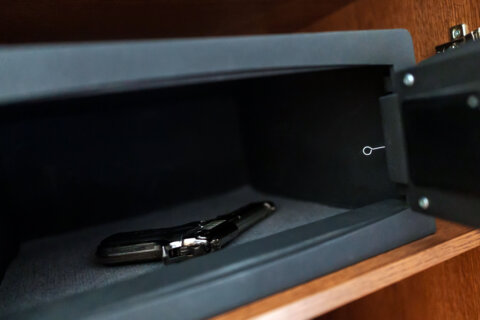Toddlers draw on our walls with crayons even after we ask them not to. Older children may jump on the furniture after we expressly forbid it. And of course, many teenagers break rules, lie about it to their parents and even endanger themselves and others with their irresponsible behavior.
While children of all ages seek the approval of their parents, it’s also natural for them to create space and separate themselves from their parents — doing what they choose rather than what parents expect. So how should we think about our child’s misbehavior? When our children take life into their own hands — and make decisions that go against our wishes — what should we do in response?
Research shows that the most effective approach to raising children is to have clear expectations and be warm toward them; this method is referred to as authoritative (not authoritarian) parenting. Children do better and their sense of confidence is improved when parents use an authoritative approach that integrates empathy, parental emotional regulation, a firm tone and an understanding that most incidents of misbehavior are opportunities for teaching rather than punishment.
[See: 10 Concerns Parents Have About Their Kids’ Health.]
Authoritative parenting incorporates a method of child-rearing called Positive Discipline. With this approach, encouragement is preferred over punishment, mutual respect while maintaining firm limits is preferred over permissiveness — or no expectations — and enjoying your child and your relationship is preferred over keeping a cold, demanding distance.
When a child passes from being cooperative to sometimes oppositional and from innocence to experience, being both understanding and responsive is a normal, required part of being a good parent — it comes with the territory.
In addition, as parents, we need to understand that our children’s brains are only in the process of maturing. Kids are subject to impulsive, reactive behavior and emotions. It’s our responsibility then to regulate our own emotions and provide guidance to our children.
With that in mind, here are some ways to keep proper perspective while determining how to respond when children choose to go their own way:
— Recognize the importance of your child’s autonomous “bad” choice as healthy development. Think of the situation as a teaching opportunity.
— Check in with yourself to be certain you are in control of your emotions, which is important in order to send a constructive, life-affirming message that preserves your child’s self-esteem.
— Take your child away from the situation and, in a serious tone, explain that he can’t draw on the wall and that you don’t like it when he makes that choice.
— Be clear about your expectations, and offer another choice or solution to the problem.
[Read: Fathers: We Must Learn From Our Children.]
I always recommend that the best place to start is by thinking of the meaning of your child’s behavior. You don’t need a course on child development. But it does help to understand, for example, that a 2-year old drawing on the wall — when the child has been expressly forbidden to do so — often reflects an exciting phase of the development of that child’s individual self. She is learning that she is separate from the parent and can make choices that don’t coincide with parental expectations.
This is a welcome milestone, when a child develops a confident, risk-taking, strong self to encounter the world. A response that is too punishing risks influencing the child to be anxious about independent action. A response that consistently allows the crayon-on-the-wall behavior doesn’t provide the child a clear set of expectations and teaches the child she can behave however she feels like behaving at the moment.
Remember to look at each situation from your child’s perspective, and let him know you understand. You can say, “I know the wall looks like a good place to draw, but that makes a lot of work for me to clean it, and I want you to draw on the paper I have for you.”
One of your most important goals is to help your child develop self-confident independence, even from the negative view of others — including you. Being self-confident includes having the capacity to deal with disappointments and criticism while problem-solving in an environment that encourages learning from mistakes.
[See: Teaching Kids Self-Control.]
Discipline is not synonymous with punishment. Think of these situations as teachable moments that show your child how to learn from mistakes while preserving self-esteem — an important life-long skill.
More from U.S. News
Top Reasons Children End Up in the Hospital
Apps for Kids with Chronic Conditions
The 5 Latest Poison Control Threats Kids Face
Practice Positive Discipline to Help Kids Learn From Their Mistakes originally appeared on usnews.com






